Filters: Collection: "ir_uspace" Type: "Text"
| Creator | Title | Description | Subject | Date | ||
|---|---|---|---|---|---|---|
| 1 |
 |
Bianchi, Carlo | Energy demands for commercial buildings with climate variability based on emission scenarios | The impacts of a changing climate are wide-ranging in both impact and scope. This paper investigates the effect that realistic climate variability would have on building energy demands in Salt Lake City, UT to inform planning for air quality impacts. Energy demand scenarios were derived using climat... | BEM; EnergyPlus; Emissions; Climate; Energy | 2017 |
| 2 |
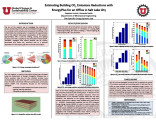 |
Lucich, Stephen; Smith, Amanda | Estimating building CO2 emissions reductions with EnergyPlus | The aim of this research is to investigate the potential to reduce greenhouse gas (GHG) emissions from the buildings sector in the Salt Lake Valley by altering the operational strategies of existing buildings. Air quality efforts typically focus on reducing emissions from transportation and industri... | Building energy modeling, Energy efficiency, HVAC, Greenhouse gas emissions | 2014-02-07 |
| 3 |
 |
Rahman, Aowabin | Predicting electricity consumption for commercial and residential buildings using deep recurrent neural networks | This paper presents a recurrent neural network model to make medium-to-long term predictions, i.e. time horizon of ≥ 1 week, of electricity consumption profiles in commercial and residential buildings at one-hour resolution. Residential and commercial buildings are responsible for a significant fr... | Building Energy Modeling; Machine learning; Recurrent neural networks; Deep learning; Electric load prediction | 2017 |
| 4 |
 |
Rees, Don M. | The termite problem in Utah | Termites or " white ants" are present in all parts of Salt Lake City and are generally found in other cities and towns throughout the state. Three different species of termites have been found in Utah: Reticulitermes tibialis Banks, Reticuliterm.es tumiceps Banks, and Kalotervies minor Hagen. Reticu... | 1939-12-27 | |
| 5 |
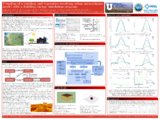 |
Bianchi, Carlo | Coupling of building and vegetation resolving urban microclimate model with a building energy simulation program | The objective of this work is to develop and validate a coupled fast-running Building Energy Modeling/Microclimate model for use in developing site-specific design strategies which minimize energy and water use All the micro-climate variables affecting the building energy consumption, such as solar ... | Building energy modeling; Urban; Microclimate; Simulation; Energy; Environment | 2018-08 |
| 6 |
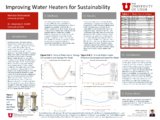 |
Malinowski, Nicholas | Improving water heaters for sustainability | Buildings use about 40% of the total U.S. energy demand. Water heaters provide hot water for a variety of building uses including sinks, showers, dishwashers, washing machines, and space heating. Water heaters are the second most energy intensive appliances in a common household. Typically a home... | Water heaters; Energy efficiency; Electricity; Emissions; Natural gas | 2018 |
| 7 |
 |
Rockwell, Kenneth W. | Religious diversity in Salt Lake City: historical and conemporary photographs at the University of Utah's Marriott Library | PowerPoint presentation for the Utah Library Association, presented on May 17, 2019. This presentation highlights historical and contemporary photographs in the Marriott Library's Digital Library showing churches and other religious structures in Salt Lake City. These photos reflect the history and... | 2019 | |
| 8 |
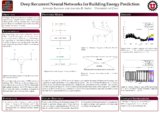 |
Rahman, Aowabin | Deep recurrent neural networks for building energy prediction | This poster illustrates the development of a deep recurrent neural network (RNN) model using long-short-term memory (LSTM) cells to predict energy consumption in buildings at one-hour time resolution over medium-to-long term time horizons ( greater than or equal to 1 week). | Machine learning; Energy; Building energy modeling; Deep learning; Recurrent neural networks; Prediction | 2017-01-13 |
| 9 |
 |
Rahman, Aowabin | Predicting heating demand and sizing a stratified thermal storage tank using deep learning algorithms | This paper evaluates the performance of deep recurrent neural networks in predicting heating demand for a commercial building over a medium-to-long term time horizon (≥ 1 week), and proposes a modeling framework to demonstrate how these longer-term predictions can be used to aid design of a strati... | Building Energy Modeling; Machine Learning; Recurrent Neural Networks; Deep Learning; Heating Load Prediction; Thermal Energy Storage | 2018 |
| 10 |
 |
Kynaston, Baley, Kovtun, Roman, Loveridge, Kade, Nielson, Chris, Brandes, Anna | Planetary Health Report Card: The University of Utah School of Medicine. 2020-2021 | Planetary Health; PHRC; Climate Change; Sustainability; Health; Healthcare; Water; Scarcity Food Systems; Urbanization Biodiversity Natural; Disasters Land Use Pollution; Biogeochemical Flows; Global Health; Medical School Education; Curriculum; Research; Outreach; Advocacy; Environmental Justice | 2020; 2021 | |
| 11 |
 |
Didier, Richard C. | Linking microclimate and energy use with a low cost wall mounted measurement system | Urban microclimate plays a critical role in overall urban energy demand and efficiency. At the building scale, energy use and internal conditions are directly impacted by local microclimate. The direct link between building energy use and local microclimate is through building envelope heat fluxes. ... | Microclimate; Energy; Temperature; Humidity; Arduino; EnergyPlus | 2016-06 |
| 12 |
 |
Clayton, Dale H. | Nocturnal foraging of yellow-crowned night herons in the Bahamas | Detailed observations of nocturnal foraging of the Yellow-crowned Night Heron (Nycticorax violacevs) are not to be found in the literature, though this species commonly feeds at night (Kushlan 1978, Riegner 1982a). I observed several Yellow-crowned Night Herons foraging during November and December... | Nocturnal foraging; Bahamas; Nycticorax violacevs | 1985 |
| 13 |
 |
White, Paul H. | Clinical validation and cognitive elaboration: signs that encourage sustained recycling | Three field experiments coupled the clinical psychology concept of validation with Elaboration Likelihood Model-Heuristic-Systematic Model theorizing to increase the influence of persuasive messages on aluminum can recycling. Signs that validated students' complaints that aluminum can recycling was ... | Psychology; Recycled products; Refuse, disposal; Clinical Psychology; Field experiments | 2002-08-01 |
| 14 |
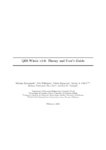 |
Bozorgmehr, Behnam | QES-Winds v1.0: Theory and User's Guide | A new dispersion modeling system based on the well-used FORTRAN-based QUIC (Quick Urban and Industrial Complex) dispersion modeling system originally developed by the University of Utah and Los Alamos National Laboratory [1], has been under development as collaboration between the University of Utah... | 2021 | |
| 15 |
 |
Legorburu, Gabriel | Using Observed Data During Early Design To Simulate Building Mechanical System Energy Performance | Energy Modeling; Real-World Data; Neural Networks | 2019 | |
| 16 |
 |
White, Paul H. | Validation, persuasion and recycling: capitalizing on the social ecology of newspaper use. | Two experiments used clinical validation to increase scrutiny of messages posted in public settings. The first experiment used a 2 (validation: no/yes) × 2 (persuasion: none/"it is important") factorial design to develop messages about newspaper recycling. The prompt (no validation/no persuasion) h... | Recycling; Social Ecology; Newspapers; Social psychology | 2004-09 |
| 17 |
 |
Khan, Faisal Habib | Commercial and industrial applications getting ready for direct-current power distribution | This paper describes design trends in several classes of power-electronic appliances that will increase the appeal for distributing dc power in buildings. In the commercial sector information technology (IT) power conversion architectures are moving from multi- to single-voltage supplies, initially... | Direct current power distribution; Commercial applications | 2004-01-01 |
| 18 |
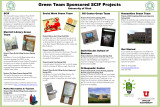 |
Green team sponsored SCIF projects | 2012-06-20 | |||
| 19 |
 |
Silverman, Randall H. | Hurricane havoc in paradise | Tuesday 3 November 1992: Having previously cast absentee ballots, six conservators departed from Honolulu airport on election day for Kaua'i and a first-hand look at the damage caused by Hurricane Iniki. | Recovery; Mold; Kaua'i museum | 1992 |
| 20 |
 |
Rahman, Aowabin | Predicting fuel consumption for commercial building with machine learning algorithms | This paper presents a modeling framework that uses machine learning algorithms to make longterm, i.e. one year-ahead predictions, of fuel consumption in multiple types of commercial prototype buildings at one-hour resolutions. Weather and schedule variables were used as model inputs, and the hourly ... | Building energy modeling; Machine learning; Prediction; Heating load; Data-driven modeling | 2017-08 |
| 21 |
 |
Scheer, Brenda | Mormon grid: Zion in the desert | A history of the adaptation of Mormon grid and block development in central Salt Lake City. | Salt Lake City; Mormon grid; City blocks | 2003 |
| 22 |
 |
Silverman, Randall H. | Disaster recovery in the artifact fields - Mississippi after Hurricane Katrina | From 22-29 September 2005 HEART - one of eight Heritage Emergency Assistance Recovery Teams - arrived in Mississippi to assess collection damage to cultural institutions following Hurricane Katrina. Organized jointly by the American Association for State and Local History (AASLH) and the America... | 2005 | |
| 23 |
 |
Benham, Bryan | Ryle and the para-mechanical | The thesis of this paper is the unconventional claim that Gilbert Ryle is not a logical behaviorist. The popular account of Ryle clearly places his work in The Concept of Mind (1949) in the camp of logical behaviorist.1 The object of this paper, however, will be to illustrate how the conventional in... | Behaviorist; Logical behaviorism | 2000 |
| 24 |
 |
Bilginsoy, Cihan | Prevailing wage regulations and school construction costs: evidence from British Columbia | The stock of public school buildings constructed during the baby boom is aging along with that generation of Americans. Soon much of this building stock will have to be replaced.(FN1) The financing of this rebuilding of America's schools is an emergent political issue of considerable importance. Giv... | 2000-01-01 | |
| 25 |
 |
Silverman, Randall H. | Litany of "terrible, no good, very bad" things that can happen after the disaster | This paper summarizes post-disaster dangers that can threaten the well-being of recovery workers. These include the structural stability of damaged buildings, electrical risks, the presence of hazardous materials and collections in the work area, and biological hazards. Issues that need to be assess... | Library materials, Conservation and restoration; Emergency management; Disaster relief, Research | 2004-05-21 |
